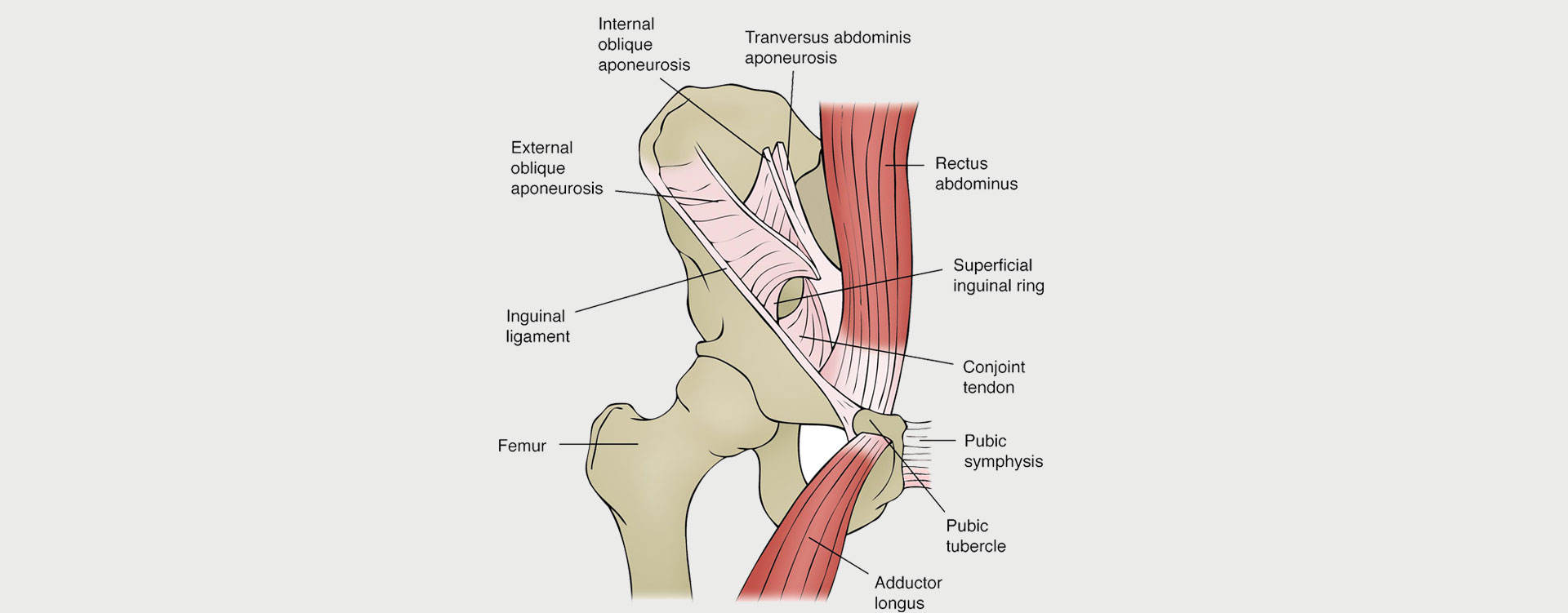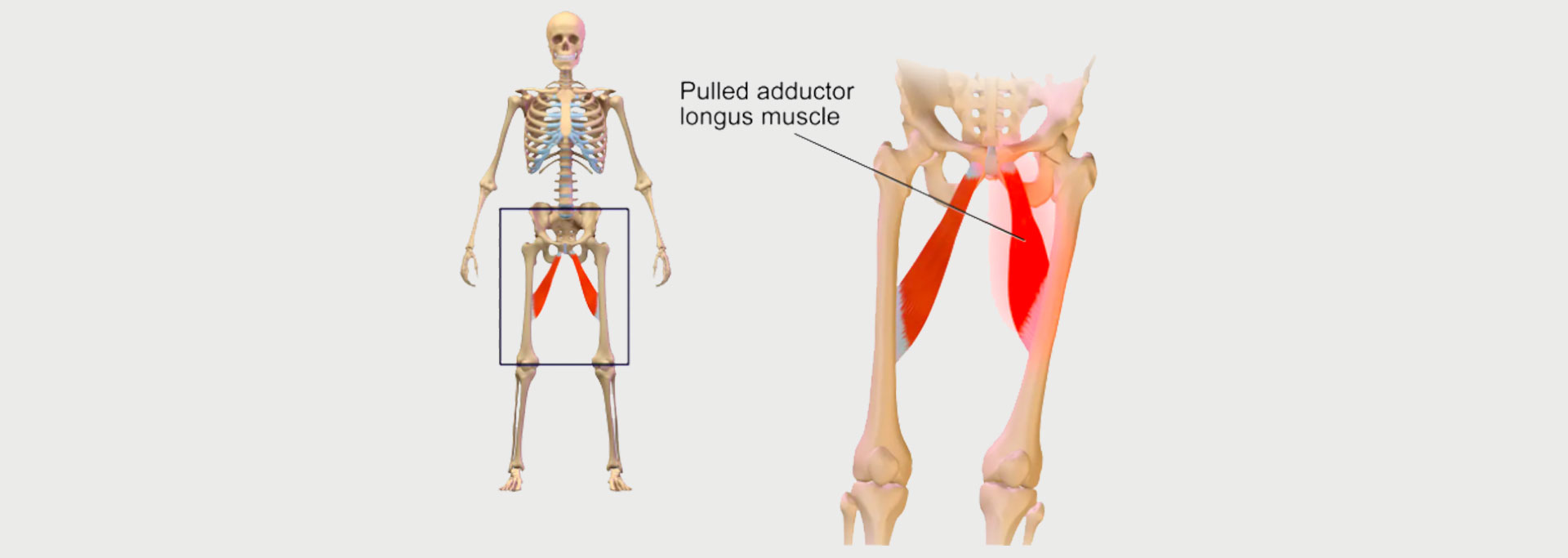GROIN STRAIN
HIP
ADDUCTOR STRAIN
AKA GROIN STRAIN

A groin strain is a painful, acute injury where the adductor muscles overextend or tear, causing pain and tenderness at the adductor tendons. The groin is defined as the area between the abdomen and the thigh on both sides of the pubic bone. There are three large groups of muscles that make up the groin: abdominal, iliopsoas and adductor group. Any of these can be injured in a groin strain, but the one we see most often at MOTUS is part of the adductor group called the adductor longus. This is the most common muscle to be injured in a groin strain.
Ice hockey and soccer players beware — the groin strain is more common among your sports than any other. In sports, this uncomfortable injury is usually the result of repetitive turning, twisting, sprinting, or kicking. Groin strains make up a reported 11% to 16% of all soccer injuries, where sprinting, pivoting, and kicking are part of every play. We also see groin strains in American football, rugby, basketball, and running.
There are three possible mechanisms to a groin strain, the most common being a forceful contraction to the adductor muscle group. In this non-contact cause of injury, a kick or pivot causes rapid muscle activation and lengthening at the same time, which hurts the adductor longus. Groin strains can also be caused by direct blunt trauma to the area, or through repetitive microtraumas that lead to an overuse injury.

Patients with a groin strain present with severe pain in the groin area, usually along the inner thigh or the insertion. Although pain gets worse with adduction, there’s no change to range of motion or strength.
A strained muscle usually means damage close to where the muscle and tendon meet. Such a strain makes the muscle weaker, and increases the chance of further injury, so it’s important for athletes to take immediate action in response to a groin strain. Unfortunately, many athletes choose to play through groin pain, which can make it worse or add a second injury on top of the strain.
When we’re treating a groin strain, we want not only to help reduce the pain and tenderness that is present, but to help you prevent strain injuries in the future. We may use tools such as NMES or hot and cold therapy to help you as you work through your groin strain. Then, we will design a prevention program to include a proper warm up, strengthening, and sport-specific training, which will help you prevent another groin strain down the line.

3 Ways to Level Up Your Rehab and Injury Prevention With Us





